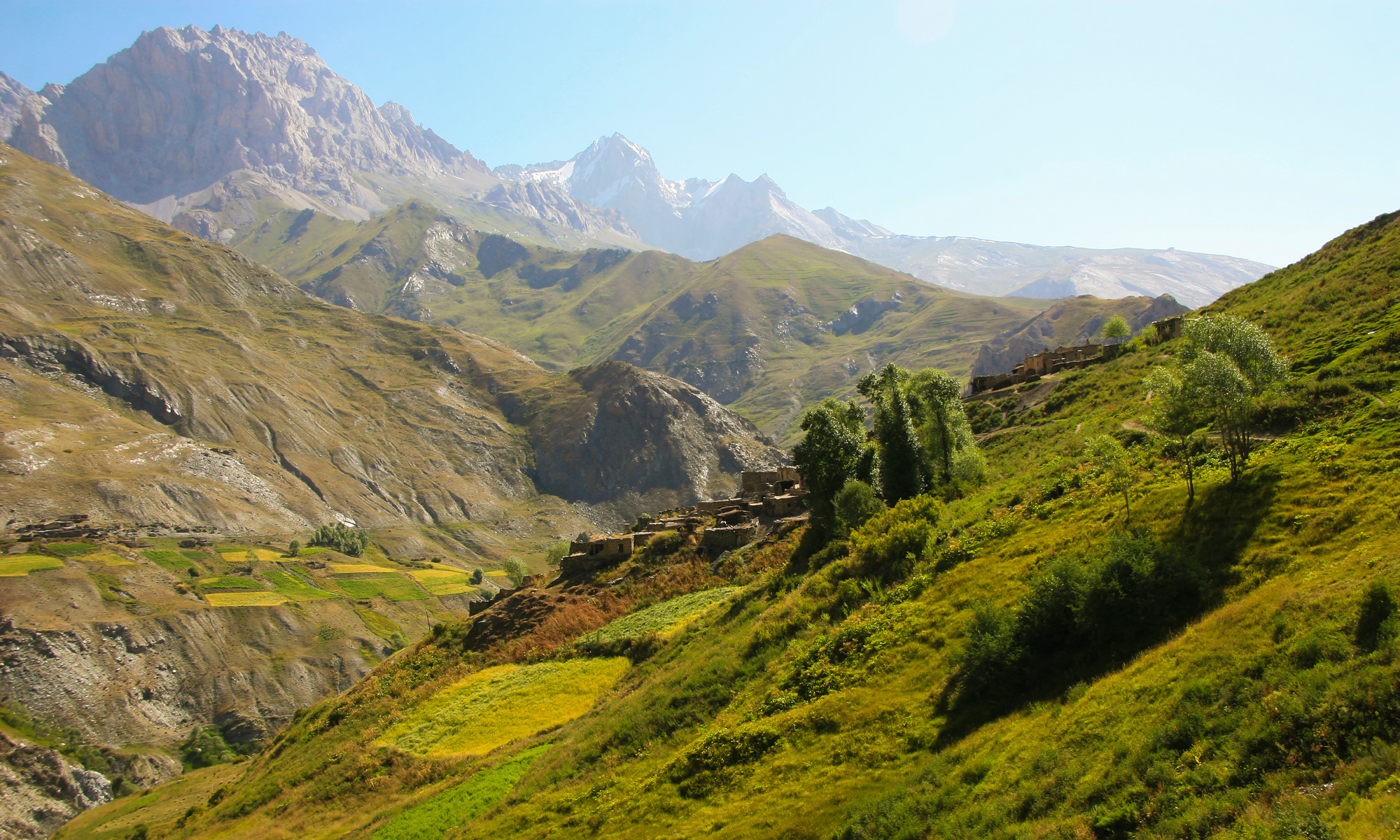In the high-altitude pastures of northern Tajikistan, summer arrives not by calendar, but by movement. For generations, Yaghnobi herders have followed the rhythm of the mountains—ascending to alpine meadows in early June, guiding their flocks across familiar routes, and returning only as the cold creeps back in. These seasonal migrations, or yallaq, have formed the backbone of a pastoral tradition rooted in balance, resilience, and intimate knowledge of the land.
Today, that balance is faltering.
Climate change is transforming the landscape of the Yaghnob Valley. Drier summers, unpredictable springs, and shrinking snowpacks are destabilizing ecosystems that have long sustained both livestock and livelihoods. For the Yaghnobi communities—already grappling with geographic isolation and limited infrastructure—these shifts represent a profound challenge, not only to food and income security, but to a centuries-old way of life.
Yaghnobi herders practice transhumance: the seasonal movement of livestock between winter villages and high-altitude summer pastures. This low-impact grazing system has historically preserved pasture health, maintained biodiversity, and reduced pressure on fragile alpine ecosystems.
Families follow established routes, determined by oral history and ecological cues—rock formations, flowering plants, the pace of snowmelt. Pastures are shared and rotated based on informal agreements, shaped more by respect and experience than regulation.
But climate variability is placing this system under growing strain.
Recent field observations and community interviews point to several interrelated climate-driven changes:
-
Earlier snowmelt and prolonged droughts leave pastures dry before herding season is over, forcing early descent and reducing livestock health.
-
Shrinking glaciers and reduced snowpack limit the flow of highland streams, undermining water security during the peak grazing period.
-
Erosion and invasive plant species have accelerated in overgrazed or abandoned pastures, particularly in areas affected by depopulation or degraded rotation patterns.
-
Increased fire risk due to dry vegetation and hotter summers, threatening both animals and vegetation in previously resilient zones.
Without mechanized support or fodder transport, these environmental pressures fall directly on herders—reducing milk yields, increasing animal illness, and eroding income sources.
The Soviet-era deportations of the 1970s displaced entire Yaghnobi communities, severing ties to traditional migration paths and grazing areas. While some families have since returned, many found their routes overgrown, shelters collapsed, and local knowledge fragmented.
Today, fewer young people remain in the valley. Those who do face deteriorating trails, limited veterinary care, and few economic incentives to continue pastoral work. The loss is more than economic—it is cultural. Migration is not just about livestock—it is a living archive of place-based knowledge.
Elders recall landmarks not on maps, but in stories: a rock that marks the halfway point, a bend in the river where lambs used to drink, a patch of herbs once used to treat hoof rot. These memories, vital to the rhythm of sustainable grazing, are fading with each missed season.
Yaghnobi herders are not passive in the face of change. They continue to adapt—adjusting routes, testing new watering spots, or timing movements with greater flexibility. But these efforts are constrained by poverty, limited state support, and a lack of access to scientific or technical resources.
To build long-term climate resilience, several community-driven and policy-supported interventions could be considered:
-
Community-led mapping of grazing routes and pasture conditions, integrating traditional ecological knowledge with geographic data.
-
Pilot programs for sustainable fodder cultivation and small-scale storage facilities to support livestock through lean periods.
-
Introduction of climate-resilient forage crops and rotational pasture planning with ecological restoration components.
-
Legal protection of key grazing areas, aligned with the broader proposal for a Yaghnob Natural-Ethnographic Park.
-
Mobile veterinary and extension services to provide timely care and advice to remaining herder families.
These measures—if shaped with community input—could preserve both ecological integrity and livelihoods.
In the context of climate adaptation, Yaghnobi herders represent not only a vulnerable group, but also an irreplaceable knowledge base. Their seasonal practices are founded on precise environmental observation, built up through generations of dialogue with the land.
But as weather patterns destabilize, this knowledge becomes harder to apply. Cues that once signaled readiness—like plant bloom times or water clarity—no longer follow predictable rhythms. This uncertainty creates stress not only for animals and ecosystems, but for the herders themselves.
Across Central Asia, similar stories are unfolding: from Kyrgyz transhumants to Mongolian herders, alpine and steppe cultures are confronting the accelerating impacts of climate disruption. Yaghnob is part of this larger regional narrative—but it is also uniquely situated, due to its isolation, cultural history, and environmental specificity.
The degradation of pastures is not just an environmental issue—it is a cultural and developmental one. Without intervention, Yaghnobi transhumance risks becoming unsustainable, triggering further migration, increased poverty, and the collapse of land-based knowledge systems.
Protecting these landscapes means supporting the people who steward them. It means recognizing that adaptation requires not only information and investment, but trust in traditional custodianship.
In the words of one herder:
“When the grass goes, the story goes with it.”
